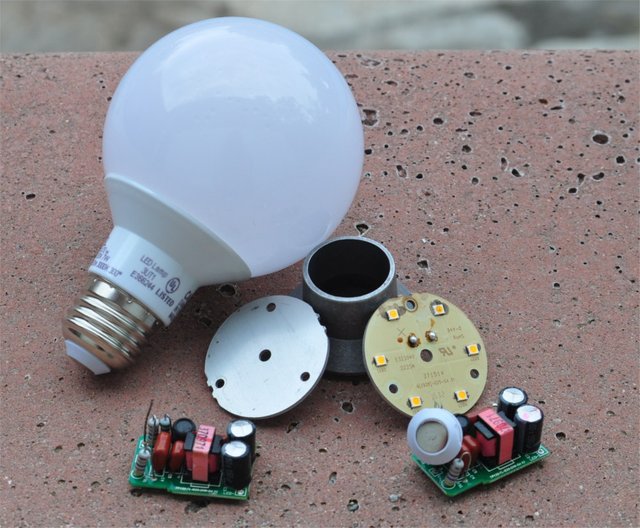Shedding Light on the LED
A few years back I bought a pack of expensive LED bulbs. Three of them went out last week; So, I decided to open them up to see what made them tick. The bulb is glued to the base; I opened the bulbs with a hammer. There was a liquid inside of the bulbs which evaporated. The liquid must have been put there by the manufacturer.
I broke apart the white casing to reveal the aluminum heat sink and an aluminum board holding the LEDs. The heat sink weights 16 grams. That's about three cents of aluminum.
The bulbs have an interesting circuit board with load resistors. After destroying the bulbs I realized that it might be possible to repair LED bulbs. The little yellow LEDs are in a chain. If one goes out the bulb goes out. Repairing or building new LED contraptions would be a good way to learn electronics.
I searched online and found several tutorials on diagnosing and fixing broken LEDs.
Unfortunately, someone "borrowed" my multimeter; So I can't play with the components.
I have nine more of these bulbs. I suspect that I am a victim of planned obsolescence and expect that all the bulbs will die soon. I think I will salvage them for the interesting parts they contain.

This is really neat! Please keep taking things apart and posting about what you find inside. Fun stuff!
What you are looking at is a transformer to reduce the voltage, a bridge rectifier to create pulsating DC voltage, and a bunch of capacitors to steady the DC voltage. There really isn't more to it than that. Wiring the LEDs in series reduces the useful life of a bulb to it's weakest link; that is; the first LED to give out.